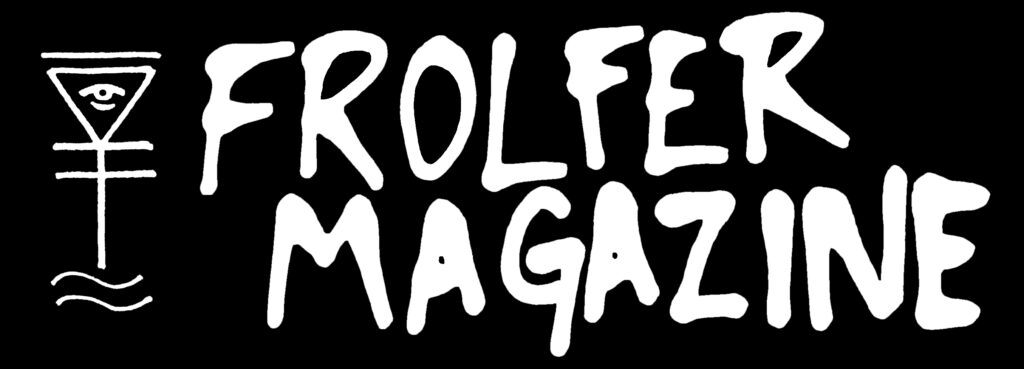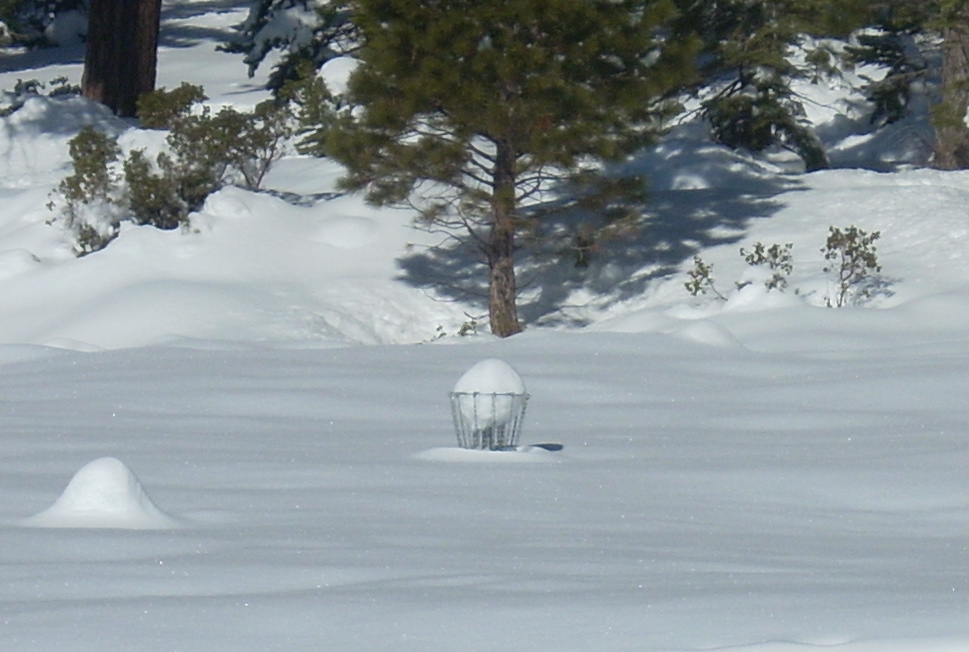If the act of putting is sacred, as it should be, is putting league just a blasphemic and broken form of worship? Or is it akin to playing Go Fish in order to prepare for a trip to Las Vegas?
‘Tis the season of the putting league, thanks in no small part to our return to “standard” time back in November. The annual migration away from the course is already in full swing throughout much of the country, as golfers trace their seasonal paths back to the warmth of breweries, bars, and bowling alleys. This is where they’ll overwinter, relying on their vast reserves of tournament tall tales to sustain their love of the long game, while executing hundreds or thousands of indoor putts in between stories and stouts.
When they return to the courses in the spring, they will show a sense of renewal in their short game, and often they will attribute this to their time and money spent at Tuesday night putting league down at local the suds-factory. They’ll even go so far as to chirp and bark “putting league!” after cashing a big putt or two in the muddy, buggy spring season.
But is there any evidence that the “putting league bump” is real? Is it snake oil? Are we just so much rustier elsewhere in our game that our putting looks relatively stellar after our hyzer hibernation?
Or, even more worrisome, are we worse putters because of putting league?
Putting practice is the selfless pinnacle of one’s own disc golf growth. It doesn’t have the flashy fun of unloading your bag on the 18th tee of the local park-style track. Hitting the band from 33ft will never, ever, ever, feel the same way as hitting the band from 330ft. We need to accept that becoming a better disc golfer isn’t all bowl holes and sunset ace runs with the boys, (or the gals). If we want to play better, we’re going to have to give up a little of our “fun” practice for “form” practice. And putting, with its effortlessly cruel demeanor, is often the least amount of fun that we can have in practice.
This is why it’s so hard for many of us to commit to putting in the putts: Instead of the scratch-off-ticket-like thrill of buzzing the tower with something beveled, we are constantly grinding against the inevitable failure of missed-makes. Putting practice is far more akin to baseball, a game where hitters who whiffed 66% of the time are enshrined in the Hall of Fame.
Being happy to suffer & grow is much harder than making putts from the edge of the circle, and the high mental barrier to entry into this mindset has deprived plenty of otherwise otherworldly putter from developing their gift. The sharks of the game like hunting baskets. They don’t love farming putts.
This is where putting leagues seemingly offer a solution: Fun putting practice. Usually with beers and camaraderie and some minor drama and suspense and entertainment. Putting leagues alienate us from the angst of solo-serious putting practice, but at a cost. (And no, not just the $7 IPA’s).
Solo putting practice is often solemn; church-like. It’s hyperfocused and almost zen. And it should be; putting is the most important part of the game, hands-down, for anyone who wants to improve their rating. It’s the thing that you have to be able to do if you want to take your game to the next level, and it’s a redundantly repeatable exercise. It’s creating muscle memory in ways that field work just doesn’t, (and probably shouldn’t).
Putting is finicky and strange and a little ethereal. It’s fickle. When you’re putting at your highest level, it’s very possible that you’ll find yourself dabbling in Diet Flow State. “The Zone” Lite. Things are just happening for you, and it’s a little bit spooky and intangible.
And so, when we’re dealing with these forces just on the outskirts of our control, it pays huge dividends to pay close attention to your mind and to your mechanics. This is an act of precision, not a party trick, no matter how destined it can feel on those rare days,
Yet here we are, dumbing down our form and our mental routine to conform to the social constructs and time constraints of a school-night get-together. Nobody wants to be the guy doing his full, 27-second foot-twitching routine before doinking another one off the front of the cage after a 4th barleywine. Instead, we find a quick, dirty little putt to adopt for the night, (and, ergo, for the entire winter), and we begin to undo whatever hard-earned solitary growth we had during the warmer months. We shake loose the ennui of that end-of-summer swagger in favor of a more utilitarian and pragmatic putt. We could get poetic here and suggest that this is some sort of metamorphosis, or a molting of that “extra” stuff, but good putting often requires that extra intangible stuff. Are we shearing the sheep in the coldest months, when they most need the extra layer of protection?
After all, we are already practicing less in the winter: Why would we also practice worse? Beers flowing. Shit-talk also flowing. Loud music, no wind, and the pressure of moving the night along all steer us away from our normal putting routine. We’re almost always quicker. Many times we’re not wearing our course clothes. Dockers and Sperries and all of the trappings of the 9-to-5 world follow us to putting league. Sometimes we change what we’re doing with our non-putting hand to suit the league, whether that be holding a beer or your second (and/or third) putter.
Yes, putting league is much different from putting practice, but there are ways that we can mitigate the influence it has on our in-season form.
Solution 1: Treat Putting League as Something Else Entirely
If we are aiming to separate our putting league practice from our Capital-P “Putting Practice”, we need to first resign ourselves to the fact that we might not perform at our highest level. That’s actually the point. You needn’t waste the mental or emotional focus of a tournament round to have a good time with your friends. Don’t dull that cerebral knife for a quick fix just because the winter dol-drums are pounding. Turn putting league into something you can erase from your mind before you wake up the next morning. It’s a throw-away. An “Activity Round”, as my friends who are having a bad day like to say.
Putting league doesn’t count. Make that your mantra. Say it under your breath when you’re a lukewarm loser. (But you can’t get away with that sort of chirping as a sore loser. You’ve got to know the difference).
Treating putting league as putting practice is like playing Windows Solitaire to prepare for your high-roller Hold’em tournament at Caesar’s Palace. You can, and maybe should, attend putting league with an overt sense of unseriousness.
There is a valuable windfall with this method as well: Mental insulation. By walling off putting league as “something else”, you’re practicing heady, high-level cerebral hygiene that you can employ and exploit during big moments on the actual course. You’re learning something about the way that your mind works in regard to disc golf, and you’re doing so while having a good time. Crafting yourself this sort of “on-off switch” is valuable in ways you’ll only understand long after you’ve attained it.
And, of course, by disappearing the putting league reps from your mind, there will be little to no retrograde to correct once you’re back on the green in the spring. You’ll be returning to form quicker, and with a new arrow in your mental quiver.
Solution 2: Treat Putting League as “Green Work”
Where Solution 1 sharpens our mental game, Solution 2 seeks to hone our physical game…and our physics game, too.
Muscle memory and hand-eye coordination are enormous parts of our ever-evolving skill set. As we age, as we learn, and as our abilities brew, we are relying on all of the years’ of experiences that our bodies have silently recorded. We know what it feels like when we get the good hit. We yearn for the mathem-athletic-al beauty of The Sweet Spot. We can sense that a putt is going in out of the hand, based solely on subconscious tactile sensations in our fingertips. The more we experience these moments, the easier it is to access these abilities. These are the intangible and unteachable lessons that our brains archive for us, coded so deep beneath our sentience that they can only be explained by blips of synapse on medical radar.
This is the power of muscle memory. The promise of the unheard mind. The source code behind our nerves and the unseen tether to our lizard brain. Repetition is one of the only real roads into this realm of instinct, giving putting league’s rapid-fire redundancy value that we shouldn’t be loath to ignore.
If you have the ability to separate routine from rhythm, and to skip the pre-release theatrics, there are ways to incorporate the core pieces of your on-course putting kitsch into a fun night at the local watering hole. This may mean that you’re focusing solely on your weight transfer, the spin, the grip, or the loft of your putt. You’re not necessarily playing for score here, but rather doing a strange version of “field work” for the green. ie: “Green work”. (I dunno. Let’s not hope that that term sticks).
It’s putting practice, but partitioned. It’s part and/or parcel, not necessarily part & parcel to your putting game as a whole.
This will, again, force you relinquish a little pride. If you’re focusing on individual slices of your putting pizza, you’ve got to accept the fact that the whole thing’s carved up and some pieces may go missing for the night. Scores suffer, but the slivers get tastier. The parts begin to outweigh the sum. When you put them all back together in the spring, you may find your pizza tastier, (and mightier), than before.
Again, this is ostensibly good for you and your game, as long as you don’t dwell on winning and instead making putting league an enjoyable vision of exercise.
Solution 3: You Do You, Boo
Or, as the “Big” Jeffrey Lebowski once said: “Ah yes, ‘fuck it’. That’s your answer. That’s your answer for everything”.
One of the most wonderful things about disc golf and similar pursuits is that they need’n’t be wholly serious. They can be played at any level of expertise and still hold their appeal and their value and their enjoyment. Our own competitive and athletic personalities dictate what sort of effort we put into this toy sport. Remember, to the average viewer, we’re on par with Yo-Yo champions, Pro Lumberjacks, and agility dogs.
We’re drilling down into the flinging of Frisbees as far as that pursuit can possibly be taken, and it’s okay for some of us to remain nearer to the surface. If ol’ buddy wants to show up and only sorta try, that has to be okay. If you’re signed up with a Mini-Golf attitude, that’s fine. You’re putting time and resources into the local disc golf community, as well as shifting the industry toward the mainstream. These are the folks who keep the shelves at Dick’s and Academy Sports stocked with starter packs. “Feeder Pool” isn’t a slur, it’s a necessity for the survival of the game. Let ’em cook with those DX Aviars. Enjoy the practice and the pints.
But if you’re a golfer with ambitions beyond the weekend fling, putting league is what you make of it. Or, more accurately, it is what you let it become.

